This document discusses active learning techniques that can be used in the classroom. It introduces think-pair-share, which involves students thinking individually, discussing in pairs, and sharing with the class. Variations include writing responses individually before pairing up. Think-pair-share benefits include engaging students and incorporating multiple perspectives. Other techniques discussed are numbered heads, three-step interviews where students take turns interviewing and reporting, and three-minute reviews where students summarize material in pairs. Active learning requires activities that motivate students to think and work in groups rather than just listening passively.
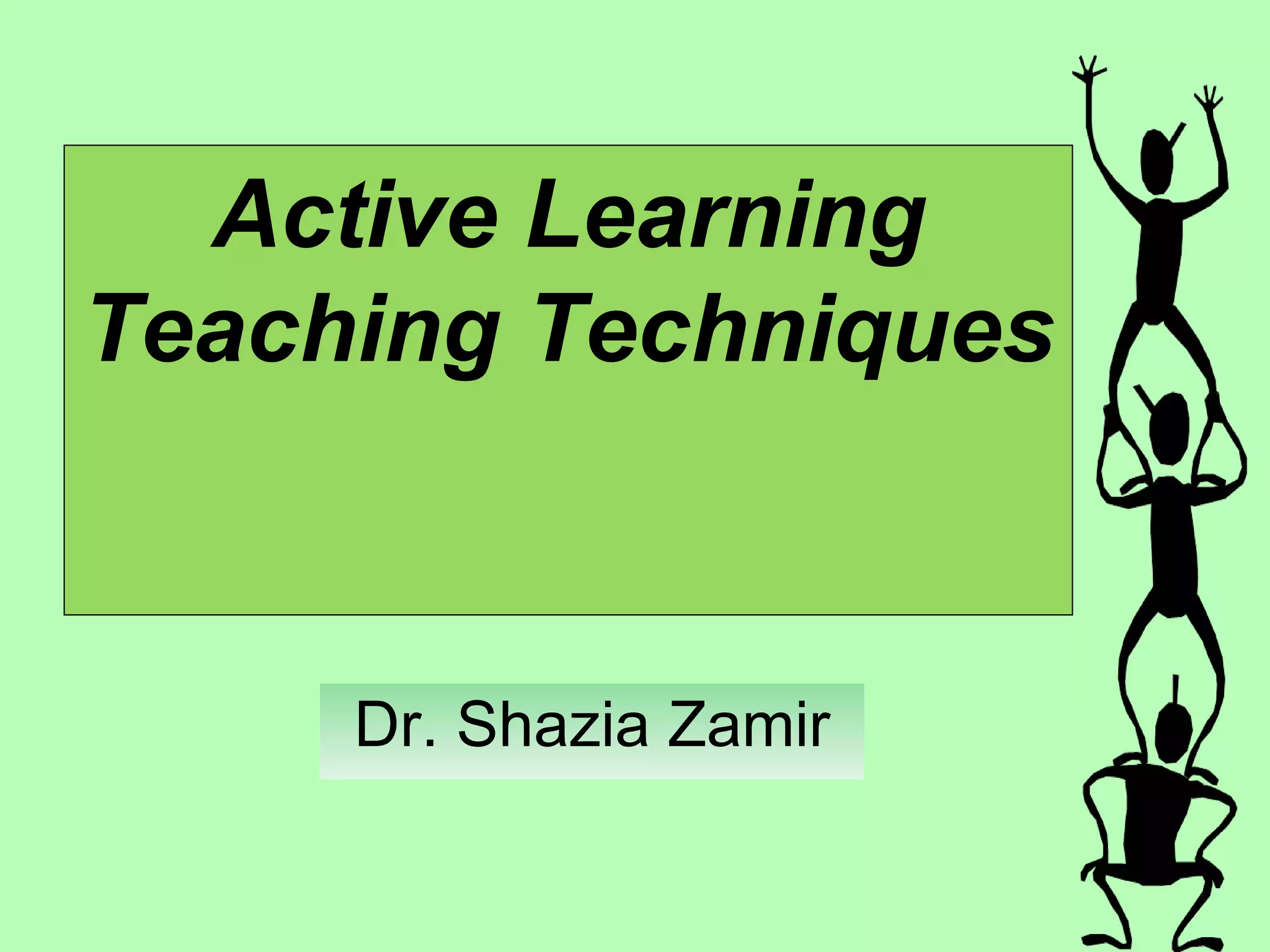
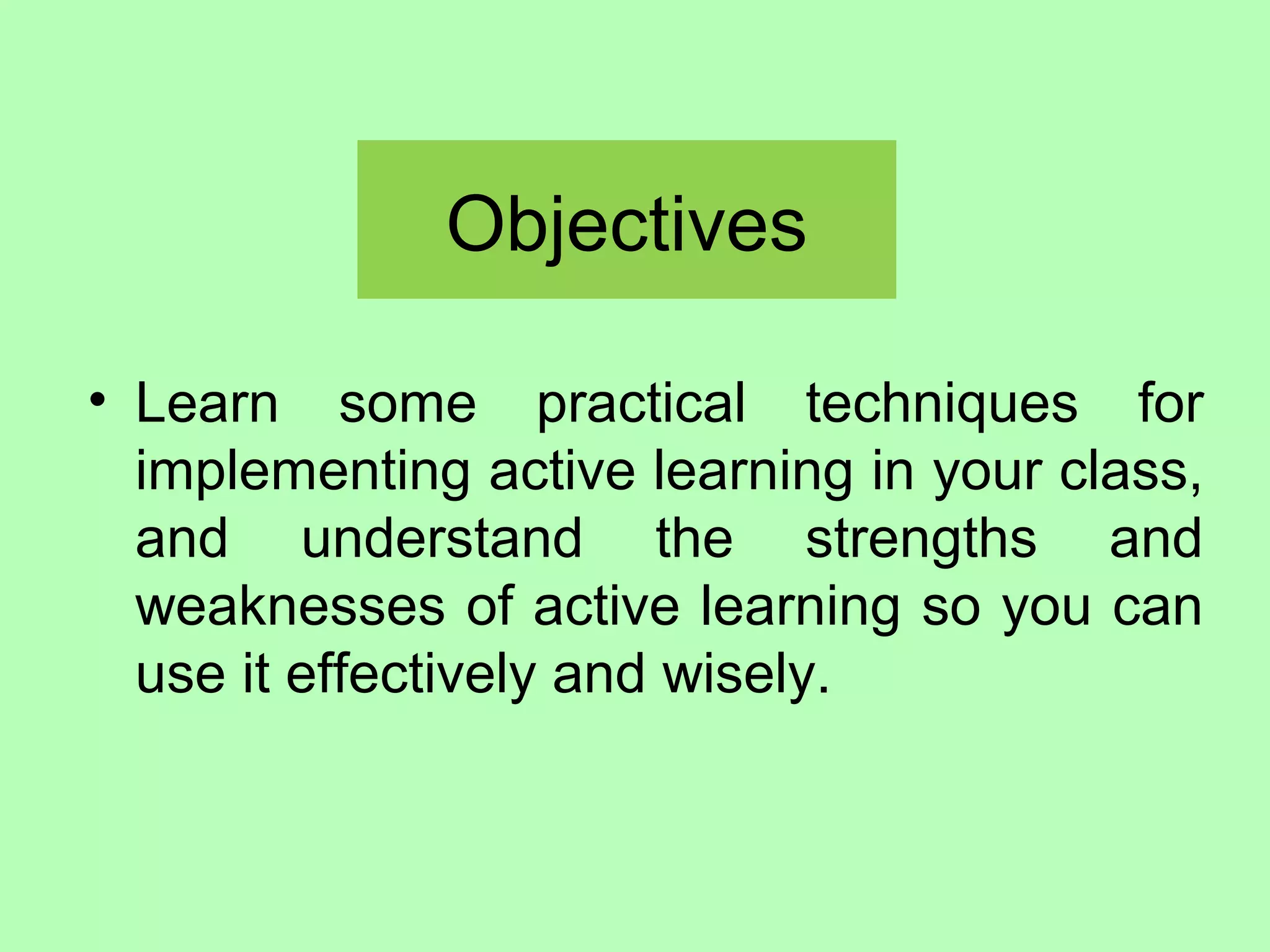

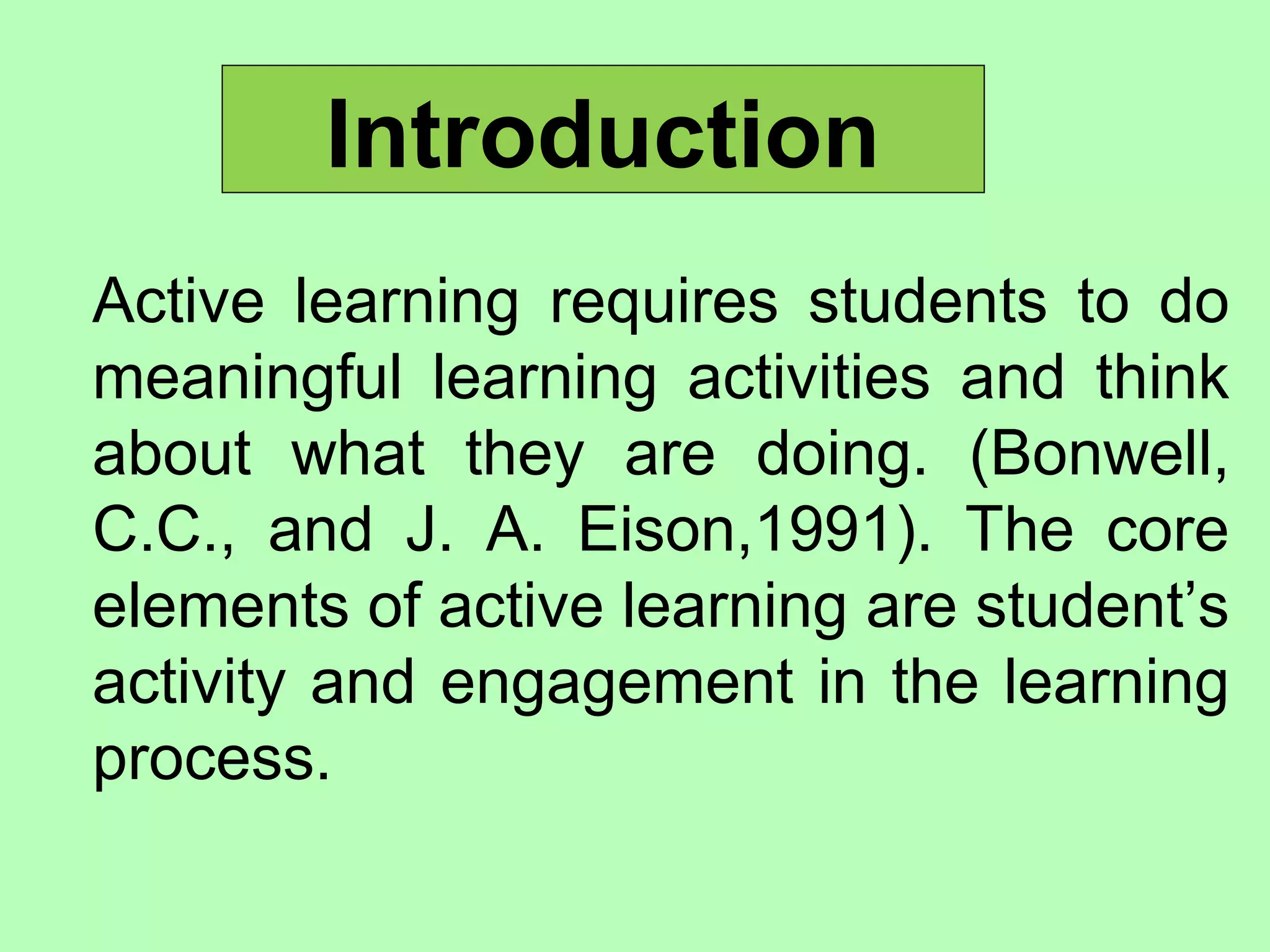
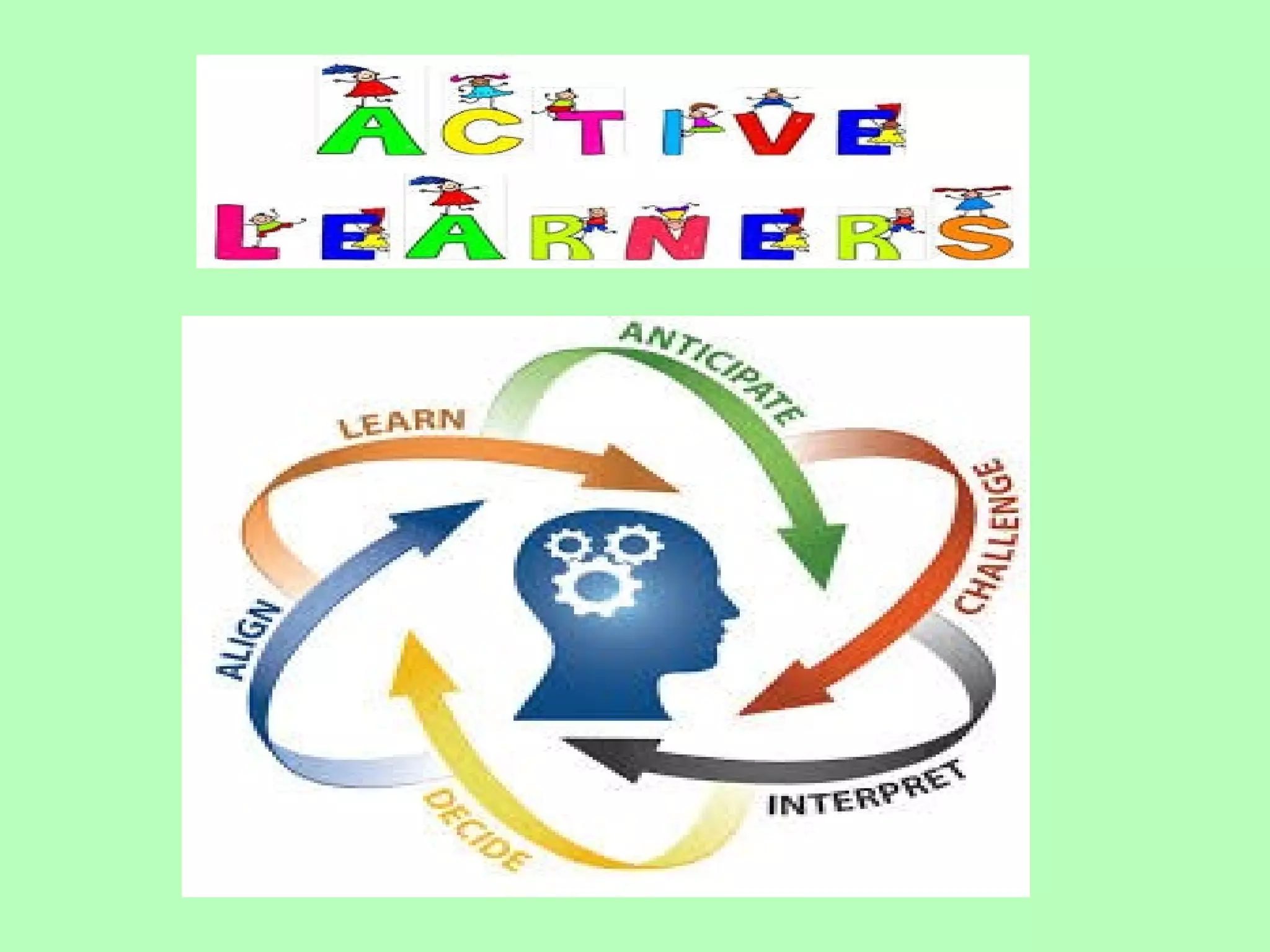

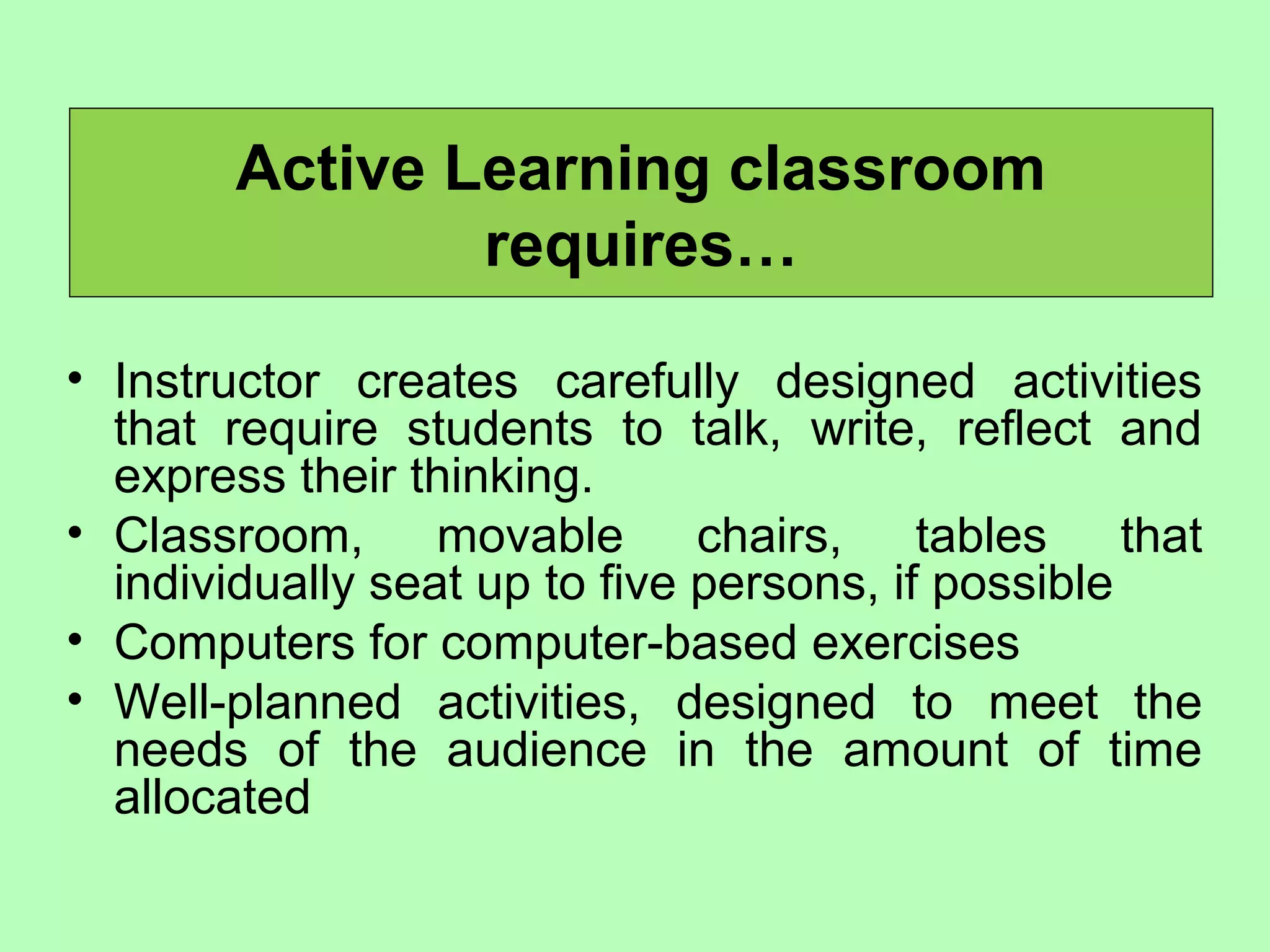
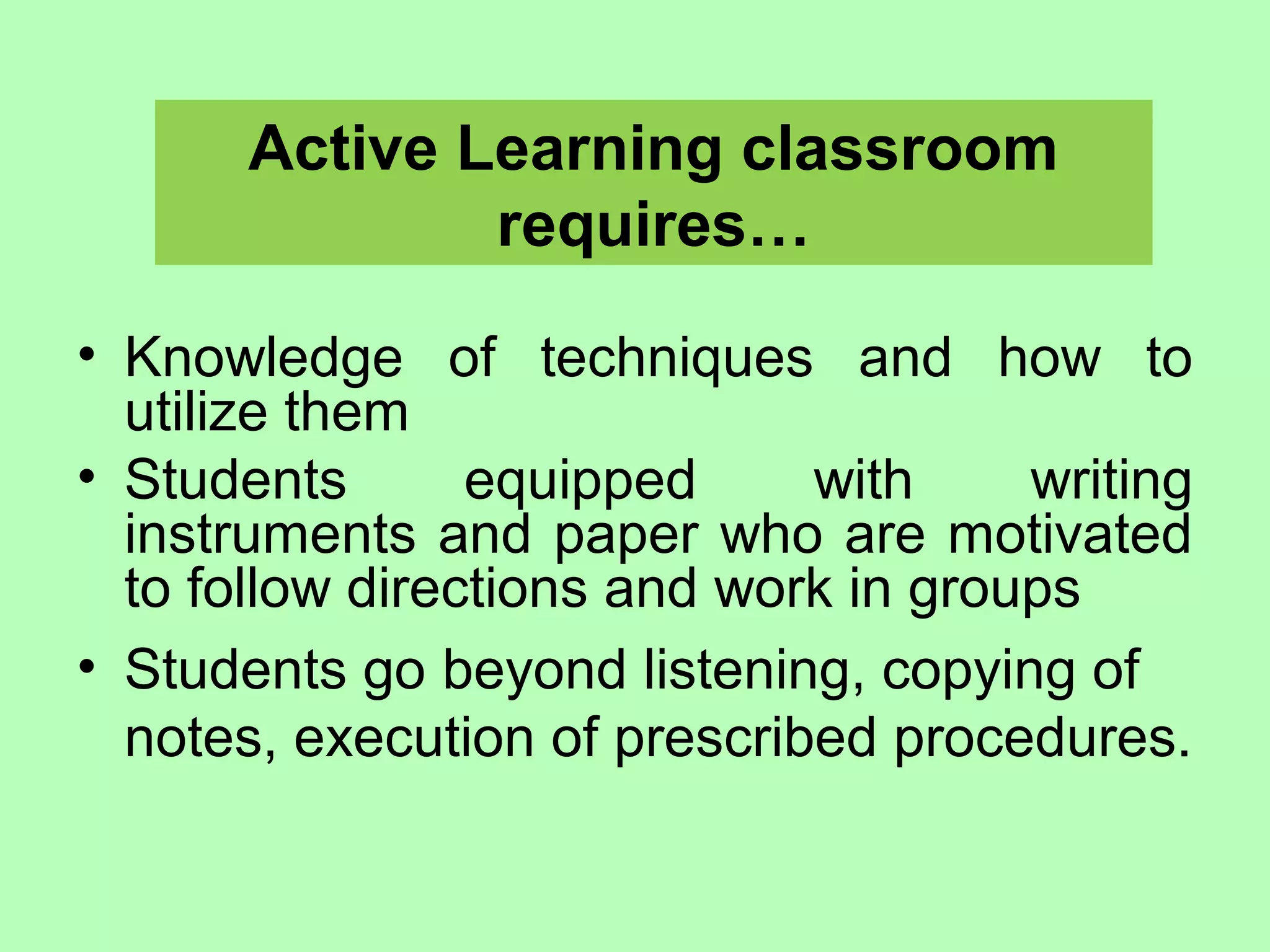
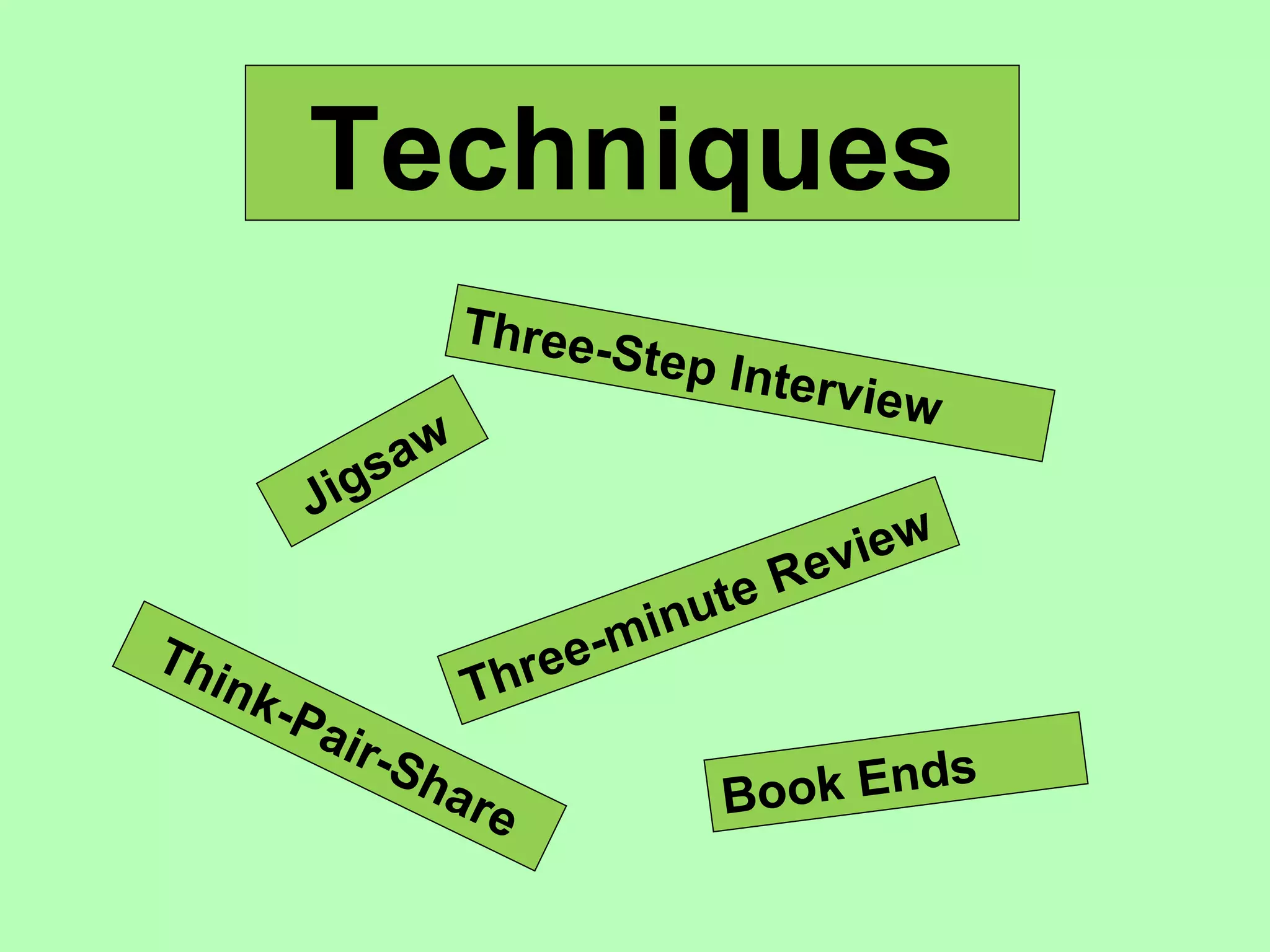
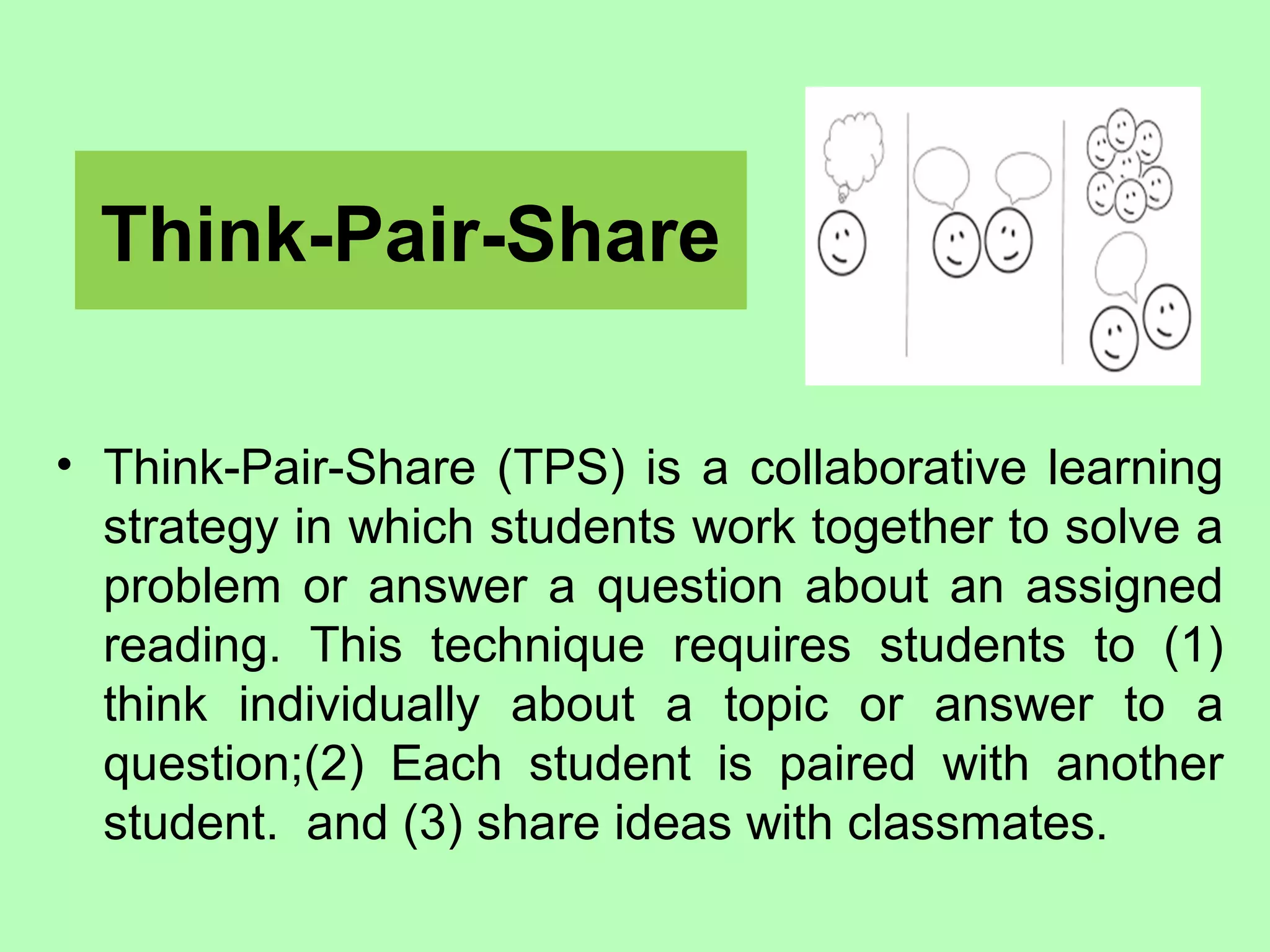
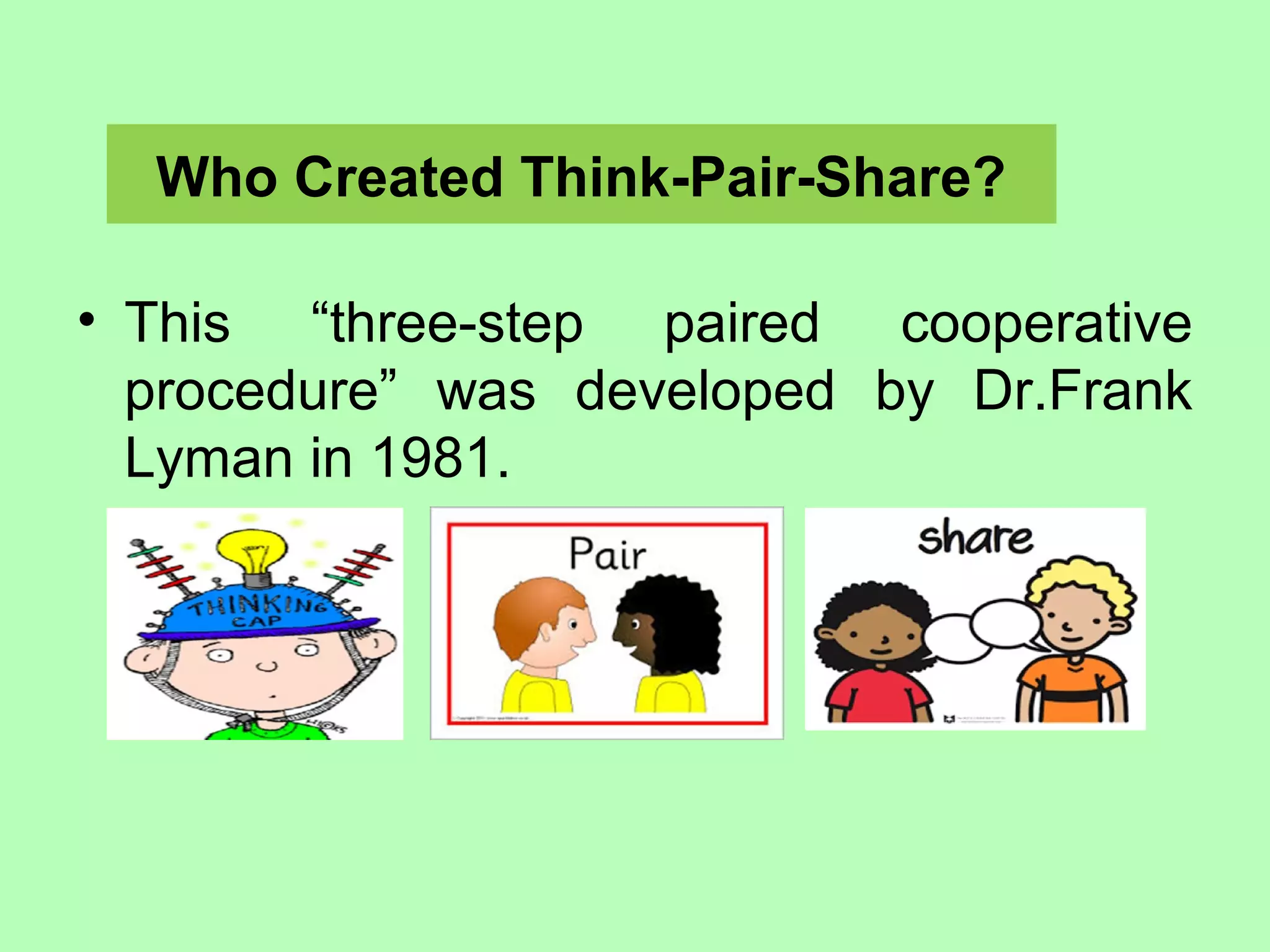
![Think Pair Share(TPS)
• Active learning strategy, in which students work
on a problem posed by instructor,
– first individually (Think), then in pairs (Pair) or
groups, and
– finally together with the entire class (Share).
• T (Think): Teacher asks a specific question
about the topic. Students "think" about what they
know or have learned, and come up with their
own individual answer to the question. [Takes 1-
3 Minutes].](https://image.slidesharecdn.com/activelearningstartegies-170708071114/75/Active-learning-strategies-1-12-2048.jpg)
![Think Pair Share(TPS)
• P (Pair): Teacher asks another question, related
to the previous one, that is suitable to deepen
the students’ understanding of the topic. Each
student is paired with another student. They
share their thinking with each other and proceed
with the task. [Takes 5-10 Minutes].
• S (Share): Students share their thinking (or
solution) with the entire class. Teacher
moderates the discussion and highlights
important points. [Takes 10-20 minutes].](https://image.slidesharecdn.com/activelearningstartegies-170708071114/75/Active-learning-strategies-1-13-2048.jpg)
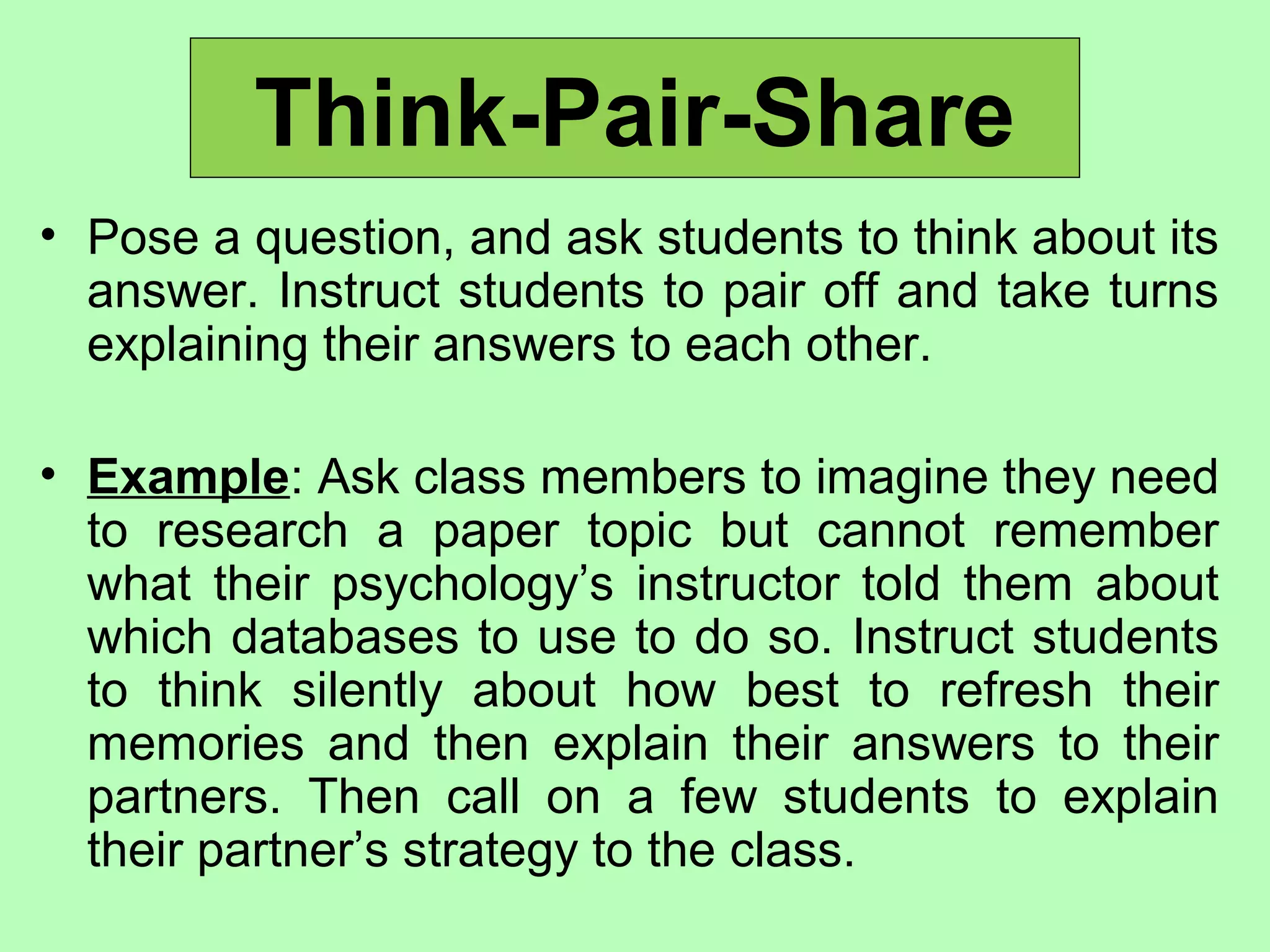
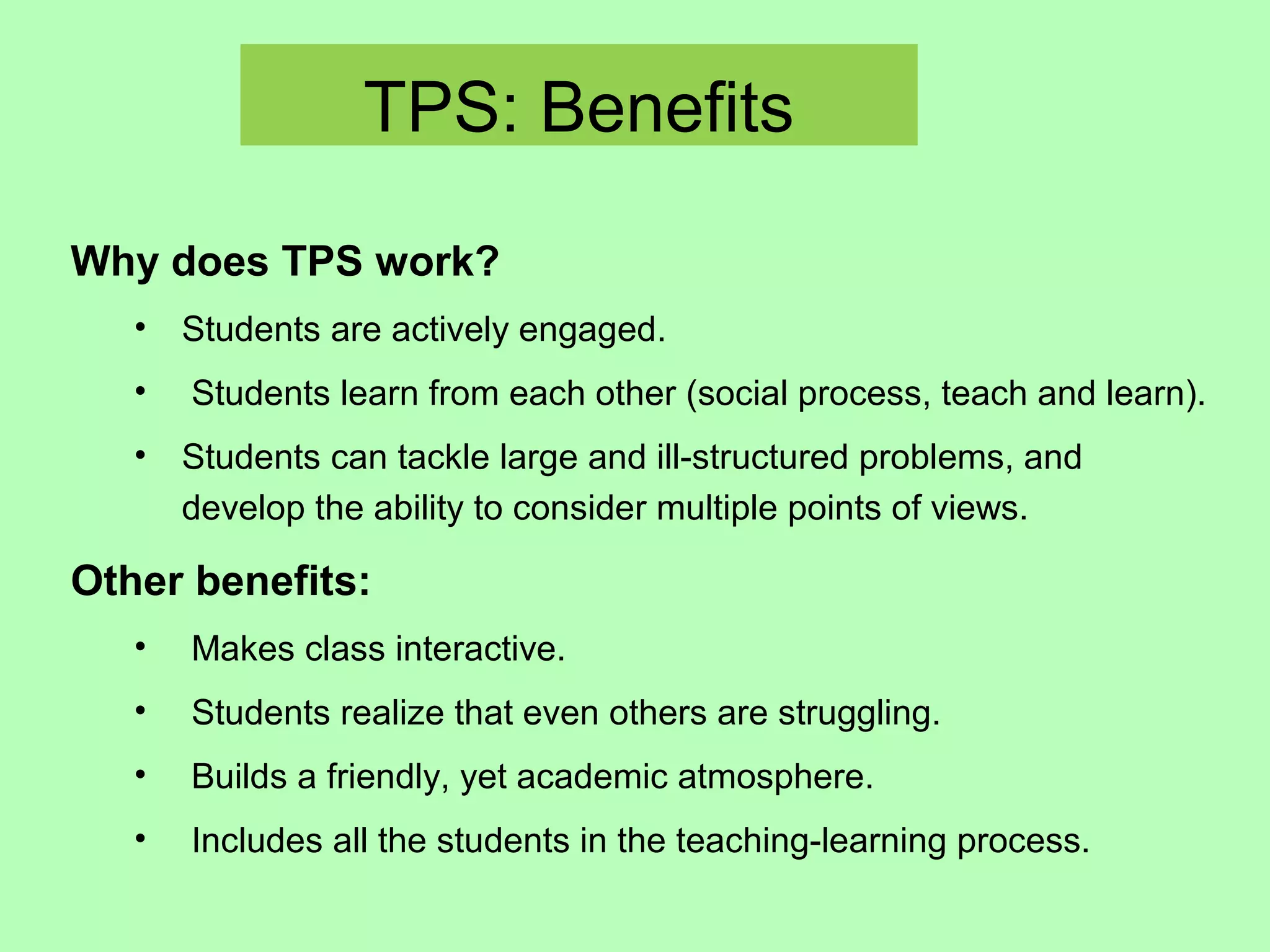
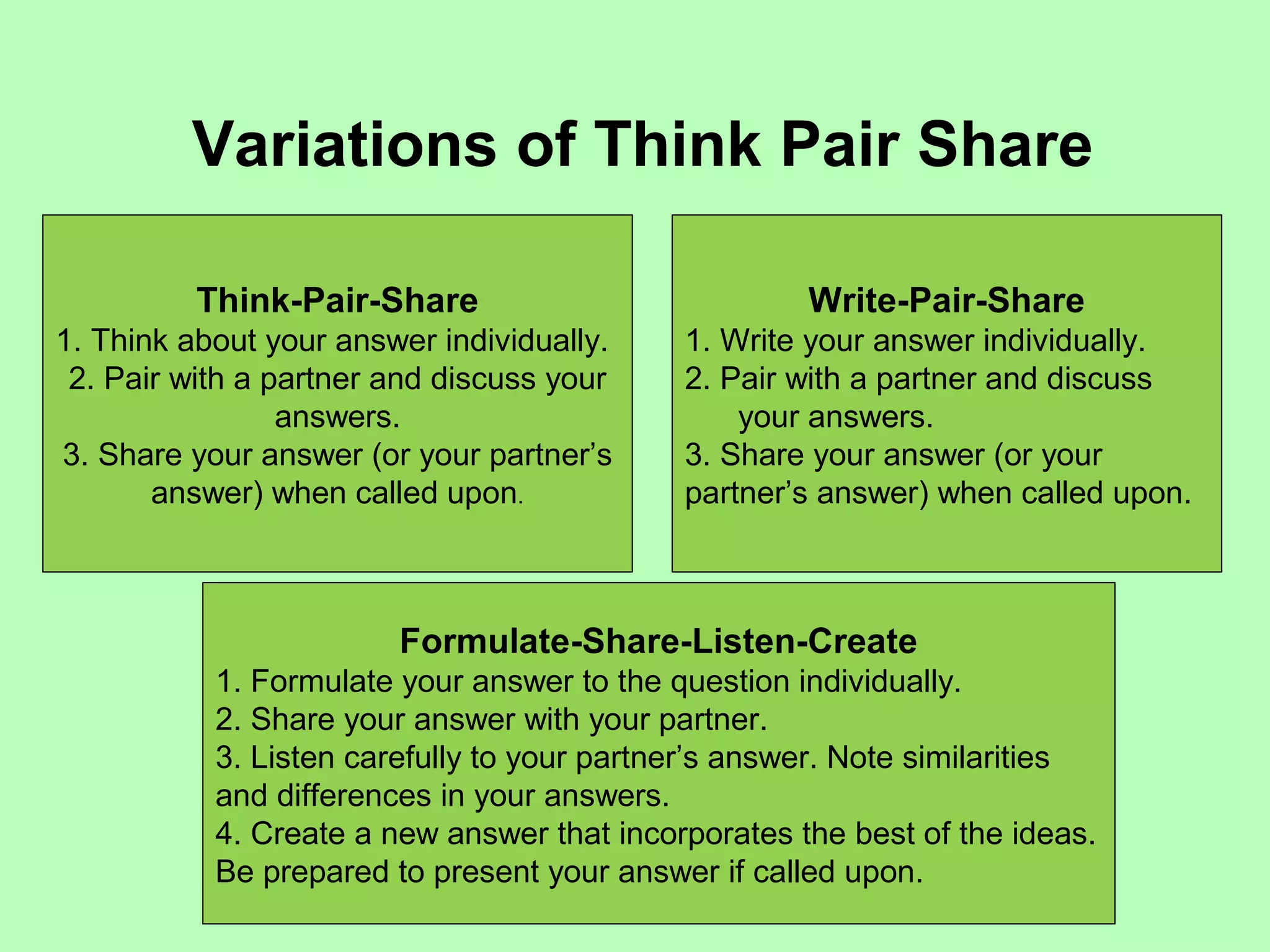
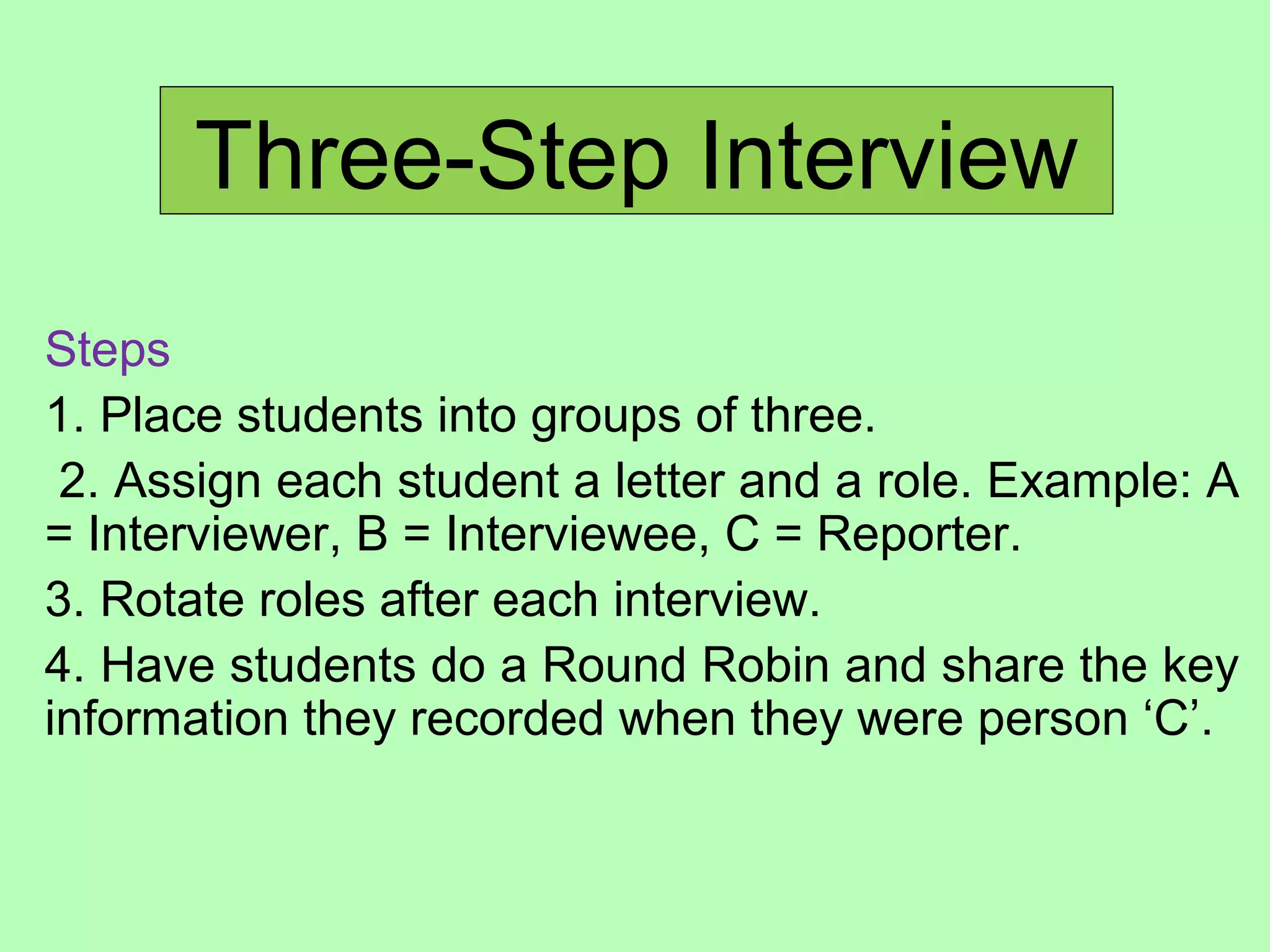
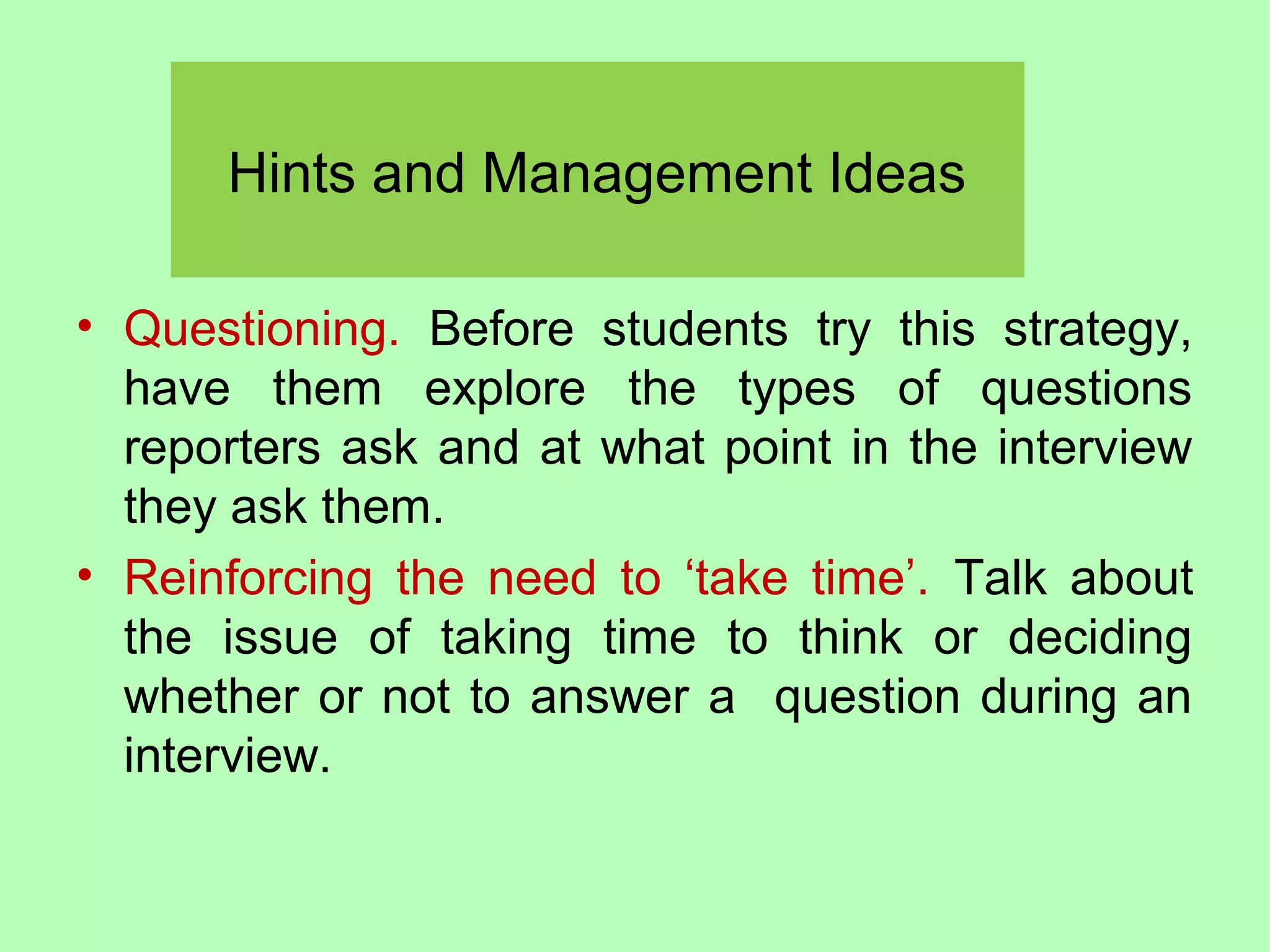
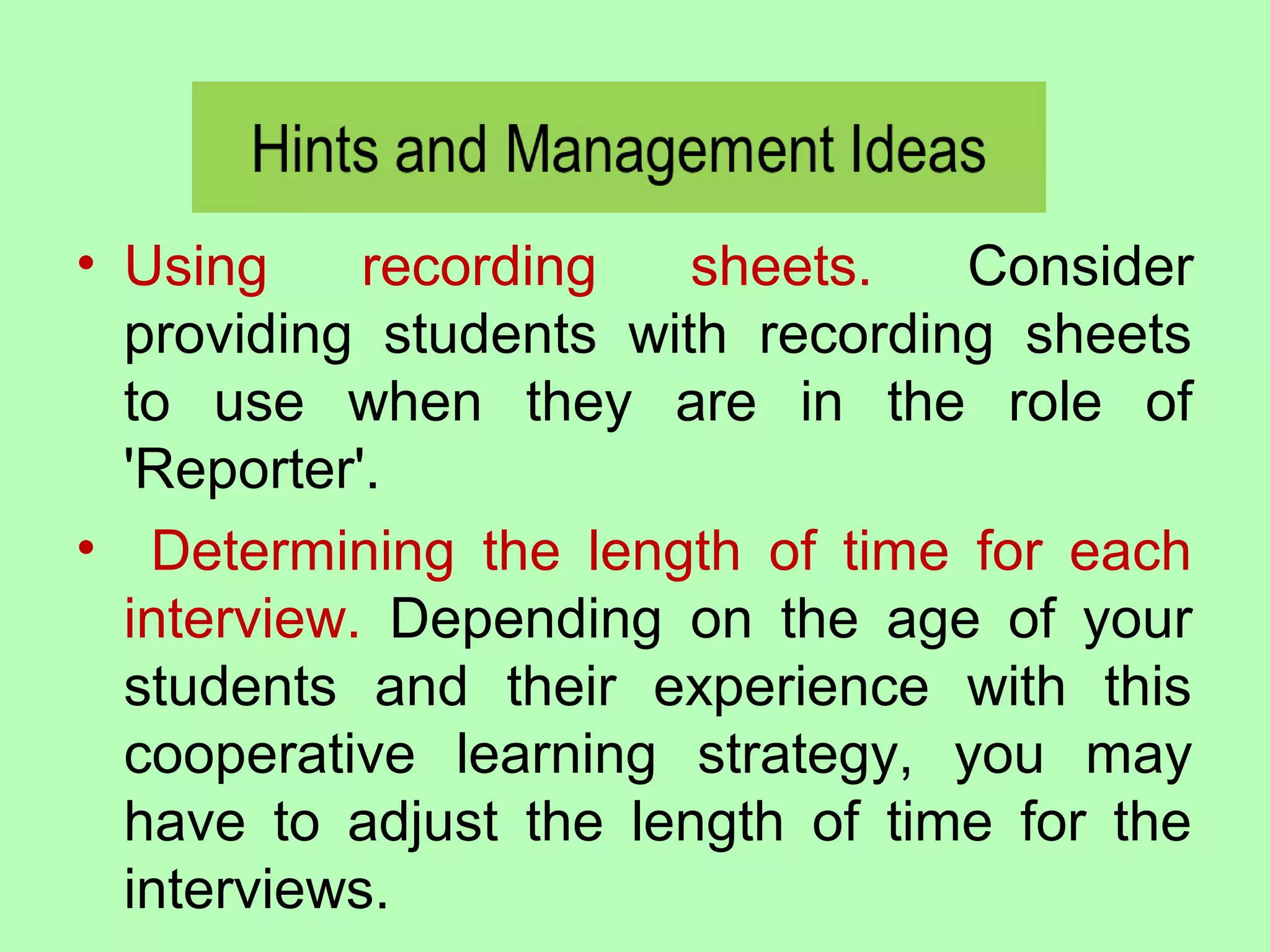
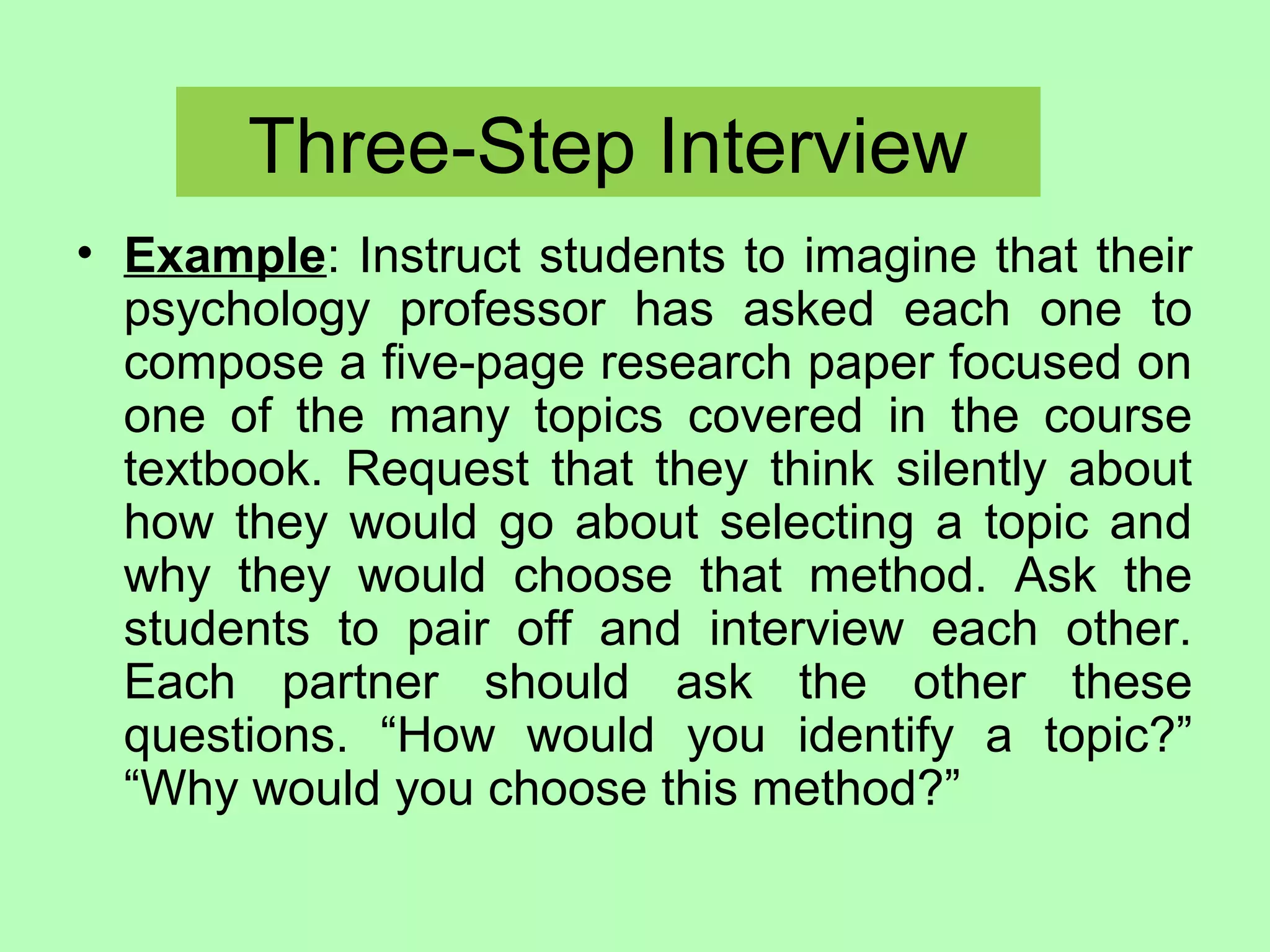
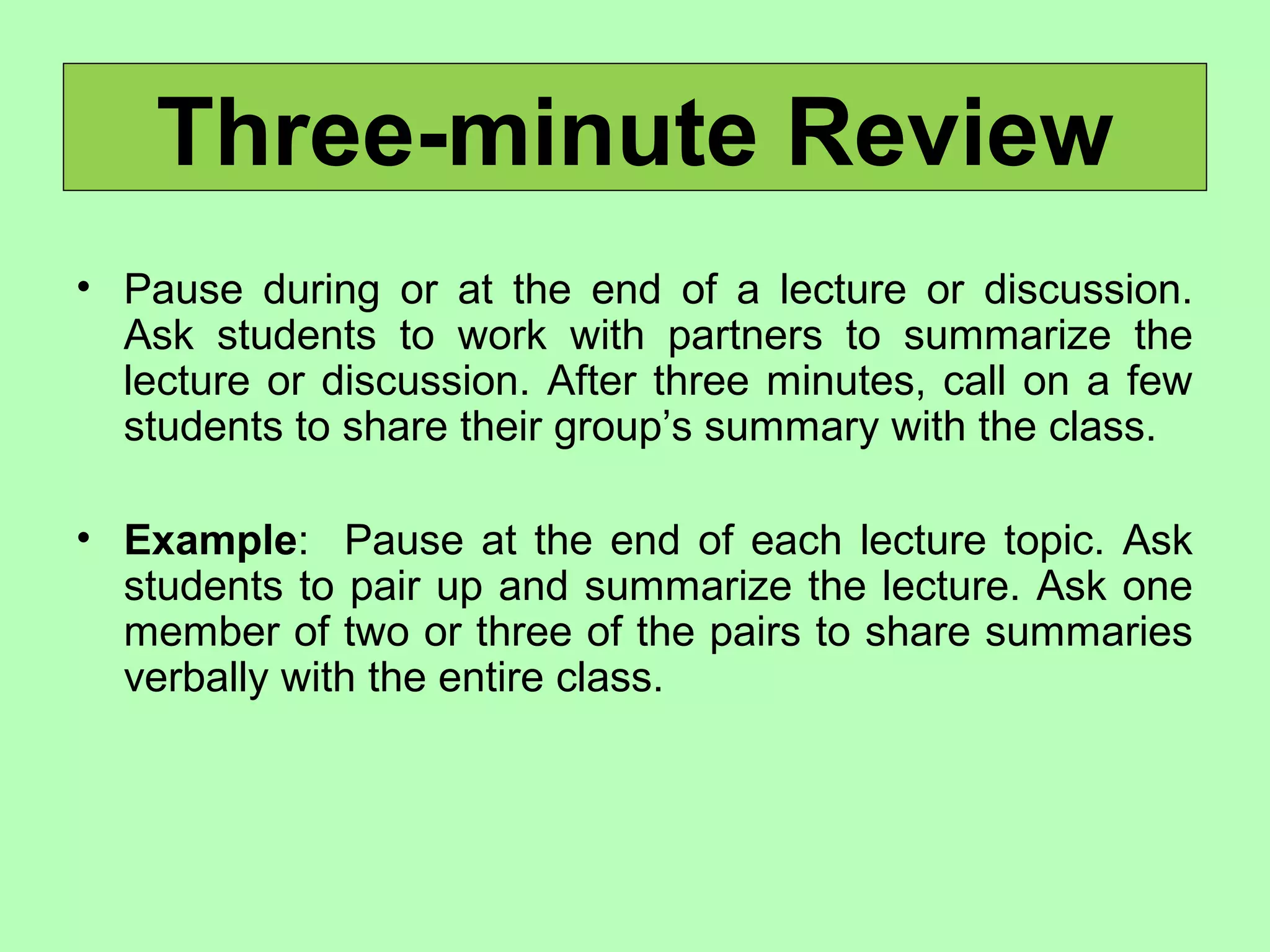
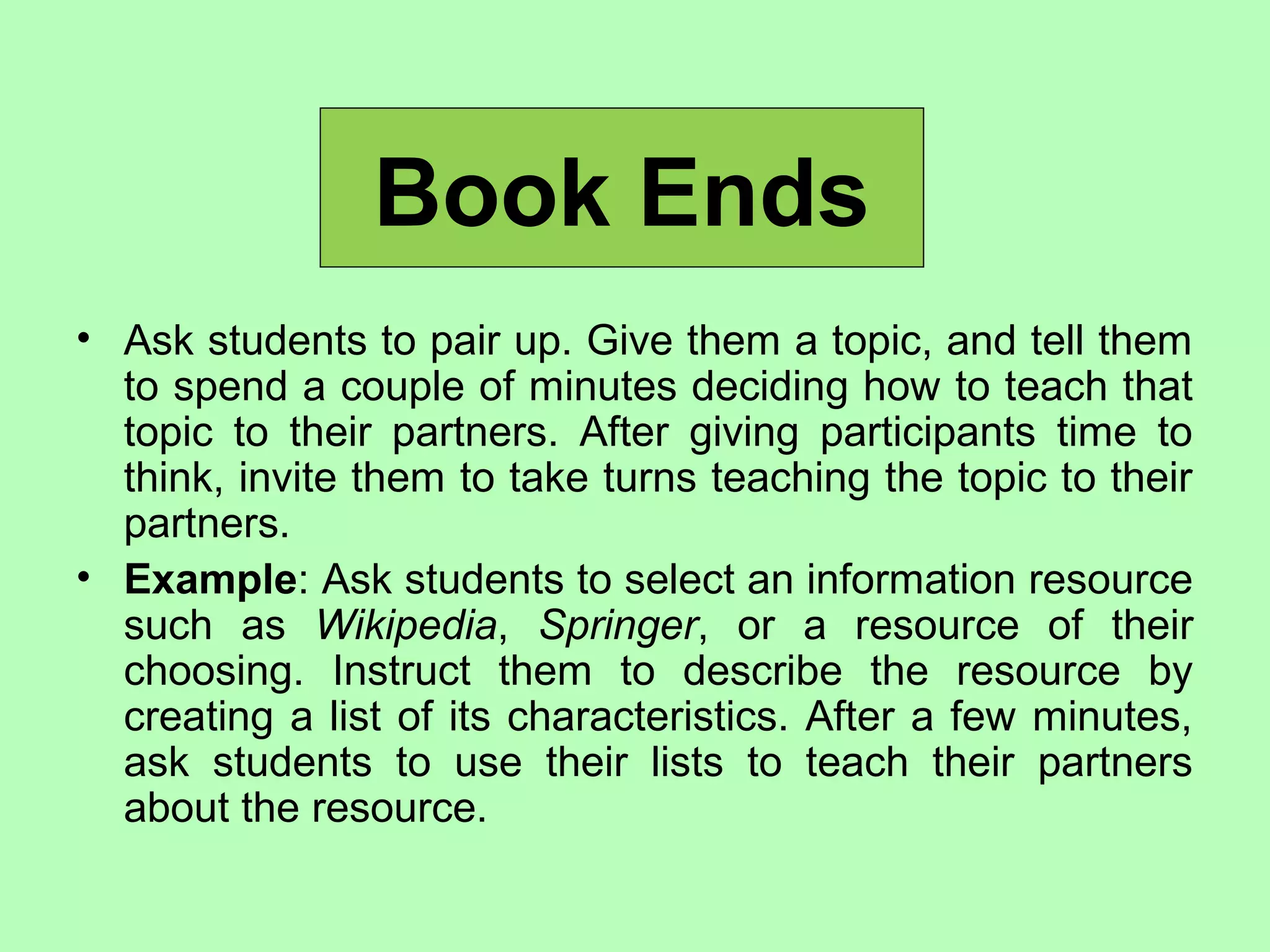
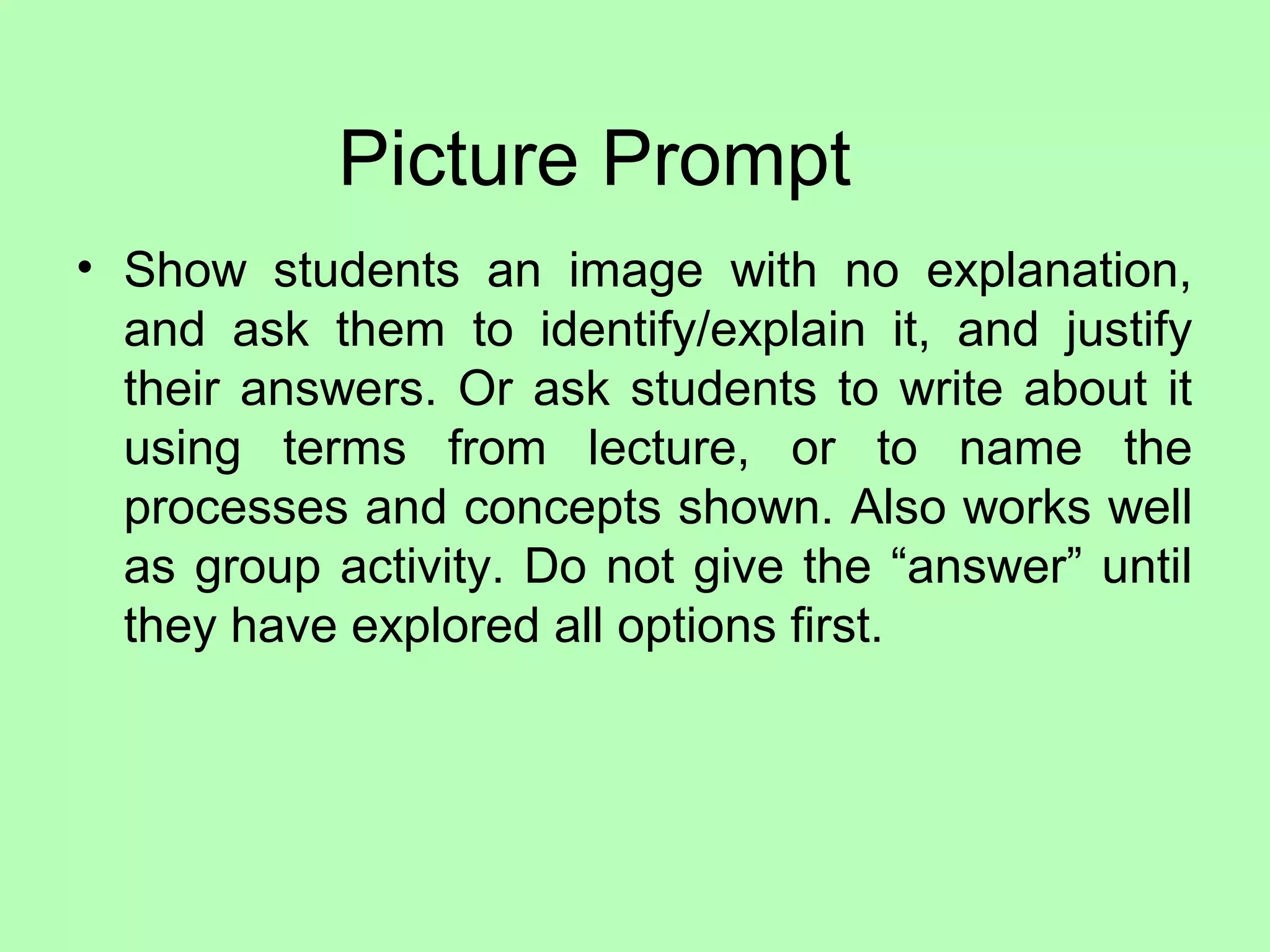

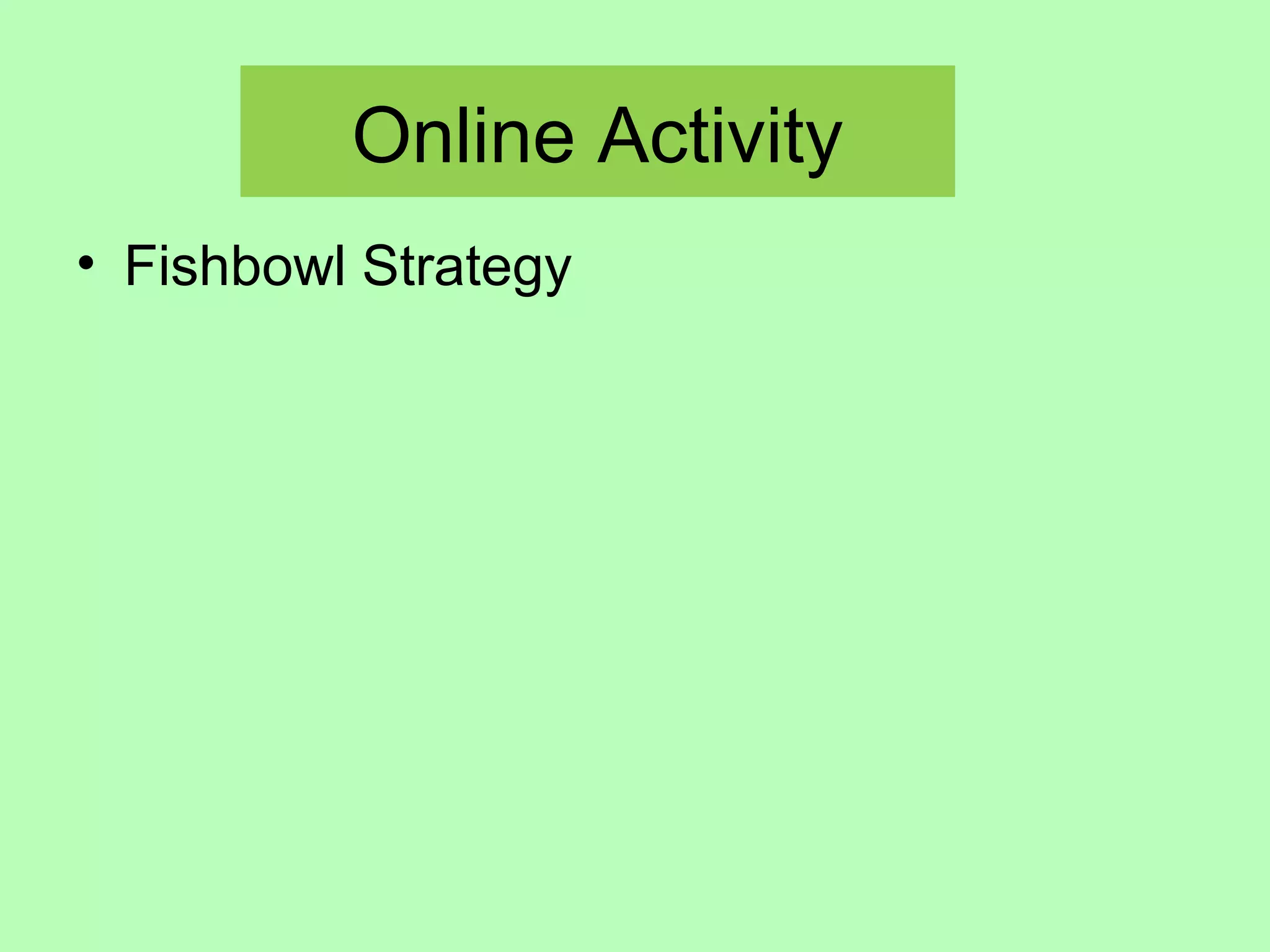
![References
• Berliner, D. C. (2000). Tips for teaching by means of the lecture method. Tempe,
AZ: College of Education, Arizona State University [Manuscript/Seminar
Materials].
• Jacobs, G.M. (2002). The teacher’s sourcebook for cooperative learning.
Thousand Oaks, CA: Corwin Press.Cooperative Learning. Retrieved May 27,
2007 from http://edtech.kennesaw.edu/intech/cooperativelearning.htm
• Johnson, D. W., Johnson, R. T., & Smith, K. A. (1991a). Active learning:
Cooperation in the college classroom. Edina, MN: Interaction Book Company.](https://image.slidesharecdn.com/activelearningstartegies-170708071114/75/Active-learning-strategies-1-26-2048.jpg)